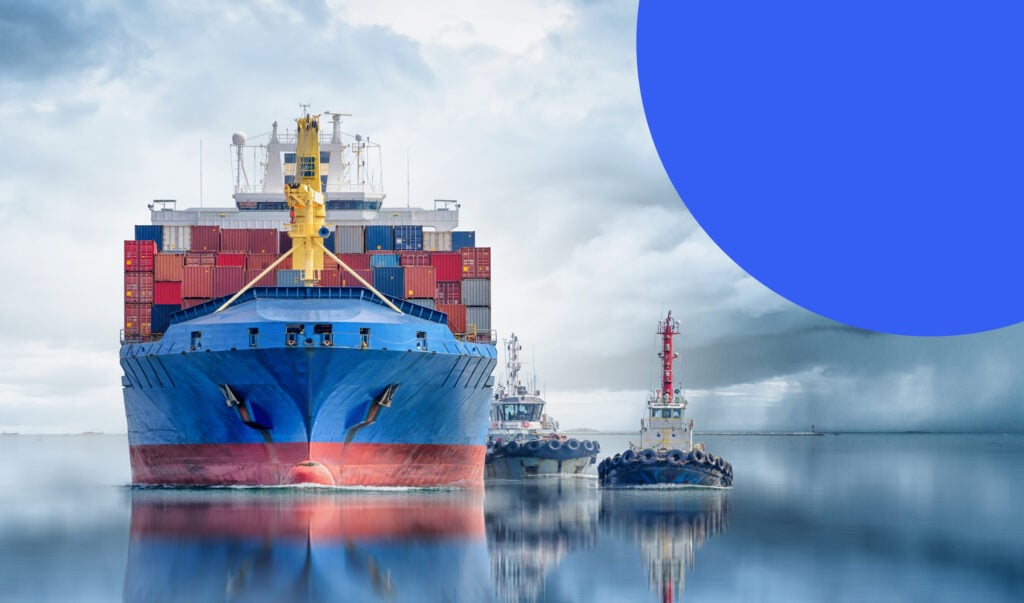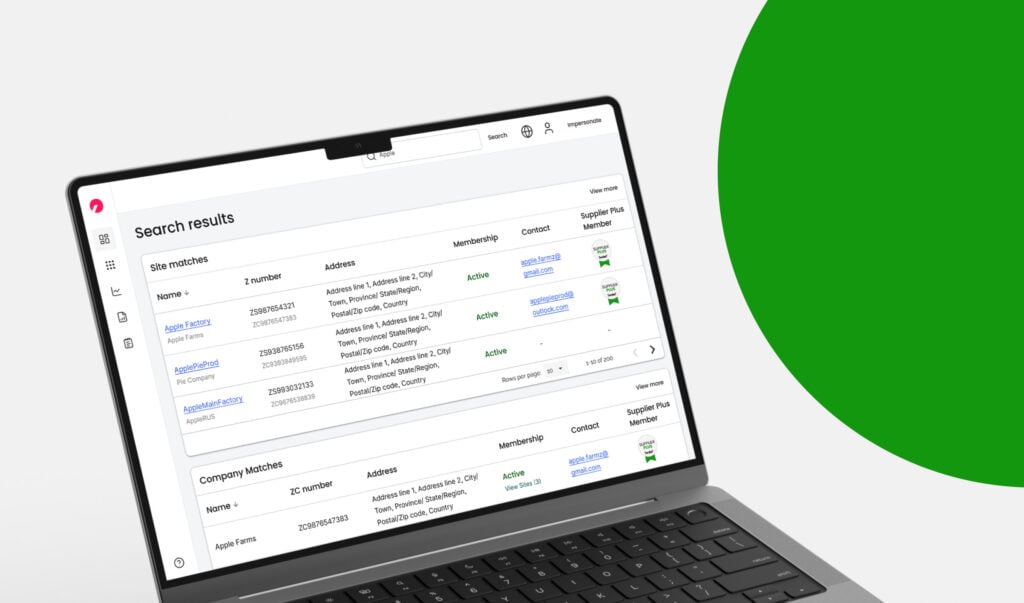Comprender los indicadores del trabajo forzoso
El trabajo forzoso es una forma de esclavitud moderna y una de las peores formas de explotación en las cadenas de suministro. Conozca los indicadores del trabajo forzoso y por qué las organizaciones los utilizan para identificar los riesgos de trabajo forzoso.
Con un estimado de 17,3 millones de personas en situación de trabajo forzoso empleadas en el sector privado[i], el trabajo forzoso es una preocupación crítica para muchas empresas. Puede ser un riesgo significativo en partes de las propias operaciones de una empresa o en su cadena de suministro.
La esclavitud moderna, entre cuyos ejemplos se encuentran el trabajo forzoso y el trabajo infantil, suele ser una actividad delictiva y es notoriamente difícil de detectar. Las cadenas de suministro globales largas y complejas dificultan la visibilidad de las personas, los lugares y las operaciones que componen las redes de suministro de una empresa.
¿Qué es el trabajo forzoso? Obtenga más información con nuestra útil introducción.
Cuando se produce trabajo forzoso, los lugares de trabajo pueden tener formas sofisticadas de ocultar esta explotación a las autoridades. Esto puede dejar a las empresas inseguras sobre cómo identificar o abordar el problema.
A la hora de identificar los casos de trabajo forzoso, es importante que la empresa o la persona entiendan qué señales buscar. Esto también ayuda a reunir pruebas que respalden cualquier alegación sobre la existencia de trabajo forzoso.
Utilización de "indicadores" para comprender los riesgos del trabajo forzoso
Para ayudar a las empresas a identificar los riesgos o los casos reales de trabajo forzoso, la Organización Internacional del Trabajo (OIT) ha identificado indicadores de trabajo forzoso[ii] para ayudar a reconocer a una persona que está atrapada en el trabajo forzoso o que puede necesitar asistencia urgente.
La presencia de uno o varios de estos indicadores puede aumentar el riesgo de trabajo forzoso para los trabajadores.
Sin embargo, el hecho de que exista un indicador, o de que un trabajador experimente malas condiciones, no siempre significa que el trabajo forzoso exista definitivamente en un sitio.
Estos indicadores funcionan como "banderas rojas", es decir, señales de alerta de que existe un mayor riesgo que requiere más investigación y acción.
Los indicadores del trabajo forzoso
Haga clic en cada indicador para obtener más información al respecto.
Abuso de vulnerabilidad
¿Qué es esto? Cuando un empleador o un tercero, como un agente de contratación, se aprovecha de personas en situación de vulnerabilidad. Por ejemplo, los trabajadores migrantes que no hablan el idioma local ni entienden las leyes locales.
Estas características hacen que algunas personas sean más vulnerables y ponen a algunos trabajadores en mayor riesgo de trabajo forzoso que a otros.
Ejemplo: Una empresa de Oriente Medio tiene contratos de trabajo que contienen una cláusula de exclusión voluntaria para el límite nacional de horas de trabajo semanales.
Los contratos están solo en árabe, a pesar de que una gran proporción de los trabajadores de la empresa provienen de países donde el árabe no es un idioma común. Es posible que estos trabajadores migrantes no sepan que han dado su consentimiento para trabajar horas por encima del límite nacional.
Condiciones de trabajo y de vida abusivas
¿Qué es esto? Condiciones de trabajo y alojamiento para los trabajadores que sean degradantes, sucios, peligrosos o de baja calidad.
Ejemplo: Una empresa minera no proporciona a todos sus trabajadores el equipo de seguridad necesario. Se espera que los trabajadores proporcionen los suyos propios, pero este equipo de seguridad es costoso y los trabajadores tienen dificultades para pagar el equipo certificado. Esto hace que muchos usen equipo de seguridad improvisado que no los protege adecuadamente.
Si este indicador se da a la luz de la restricción de la libertad de un trabajador para abandonar el empleo (con un preaviso razonable), podría tratarse de una situación de trabajo forzoso. Sin embargo, a veces los trabajadores aceptan malas condiciones de vida o de trabajo por desesperación por conseguir un empleo.
Servidumbre por deudas
¿Qué es esto? Los trabajadores incurren o heredan deudas con empleadores o agentes, y están obligados con el empleador o agente hasta que una deuda se considere pagada. Los empleadores pueden incluso seguir añadiendo costes, como la comida o el alojamiento, a la deuda de un trabajador. Esto puede dejar a un trabajador con salarios "netos" muy reducidos y/o hacer que sea imposible para ellos liquidar su deuda.
Ejemplo: Un trabajador migrante pide dinero prestado a un agente de contratación para conseguir un trabajo en otro país y pagar el transporte hasta él. Esta suma se agrega a su nombre como una deuda, y el trabajador no puede dejar su trabajo hasta que se pague.
Engaño
¿Qué es esto? La falta de entrega de lo prometido a un trabajador, ya sea que esa promesa se haya hecho verbalmente o por escrito. Cualquier situación que elimine el consentimiento libre e informado de un trabajador (si hubiera sabido la verdad sobre un trabajo, no lo habría aceptado) es engañosa.
Ejemplo: Una empresa promete a los trabajadores que irán a un lugar de trabajo en particular y que se les dará un alojamiento limpio, seguro y privado. Los contratos de trabajo que firman los trabajadores no contienen la dirección completa de este sitio ni de ningún otro. Los trabajadores son llevados a un lugar de trabajo diferente con un alojamiento sucio, inseguro y compartido.
Horas extras excesivas
¿Qué es esto? Los trabajadores deben trabajar durante horas y/o días en un tiempo que exceda los límites legales nacionales o los límites acordados colectivamente. Es posible que se les nieguen los descansos o que tengan que trabajar más allá de estos límites para ganar el salario mínimo.
Ejemplo: Los registros de un lugar de trabajo muestran que el total de horas trabajadas por semana supera regularmente las 70 horas para la mayoría de la fuerza laboral, a menudo sin día de descanso. El límite legal nacional de horas de trabajo semanales es de 50 años.
El exceso de horas extras es muy común en algunas industrias, por ejemplo, en la fabricación de prendas de vestir , muchos de los principales países productores indican que existe un riesgo extremadamente alto de esto en nuestra herramienta de riesgos. El exceso de horas extras por sí solo no se considera trabajo forzoso. Sin embargo, una situación podría convertirse en trabajo forzoso si los trabajadores no dan su consentimiento para las horas extraordinarias y son amenazados o castigados si piden trabajar en horarios regulares.
Intimidación y amenazas
¿Qué es esto? Los trabajadores son amenazados con consecuencias físicas, legales, financieras o de otro tipo si intentan dejar un trabajo o se niegan a condiciones de trabajo deficientes. Esto incluye amenazas hechas a los trabajadores que buscan afiliarse a un sindicato, o amenazas de denunciar a los trabajadores indocumentados a las autoridades.
Ejemplo: Una fábrica que experimenta problemas en la estructura del edificio amenaza a los trabajadores con deducciones salariales si no vienen a trabajar, a pesar de que la fábrica es peligrosa.
Aislamiento
¿Qué es esto? Los trabajadores se encuentran en lugares remotos sin los medios para salir o se les niega el contacto con el mundo exterior. El aislamiento puede ser geográfico, lingüístico (los trabajadores no pueden comunicarse con quienes los rodean), social o cultural.
Ejemplo: A una plantación de aceite de palma en una zona remota solo se puede llegar en barco. A los trabajadores se les permite un viaje semanal a través del río, pero el bote no siempre aparece, o llega cuando la mayoría de los trabajadores están en la plantación.
Violencia física y sexual
¿Qué es esto? Los trabajadores son abusados física o sexualmente. Esto incluye golpear a los trabajadores, obligarlos a realizar trabajos fuera de su contrato de trabajo, tocar a los trabajadores de manera inapropiada sin su consentimiento u obligarlos a consumir drogas o alcohol.
Ejemplo: Los supervisores de una fábrica abofetean regularmente a los trabajadores que no cumplen con las cuotas de producción.
Restricción de movimiento
¿Qué es esto? Los trabajadores no pueden entrar y salir libremente de un lugar de trabajo o de su alojamiento, ni tienen sus movimientos controlados de forma irrazonable. Esto incluye encerrar a los trabajadores en los lugares de trabajo o alojamientos, exigir depósitos cuando los trabajadores quieren irse al final de un turno o emplear guardias de seguridad para evitar que los trabajadores se vayan.
La Organización Internacional del Trabajo reconoce que las restricciones razonables incluyen las necesarias para la seguridad de los trabajadores en los lugares de trabajo.
Ejemplo: Los trabajadores están encerrados en el sitio durante sus turnos en una fábrica, y solo tres supervisores tienen llaves de las puertas. Los trabajadores pueden pedirle a uno de estos supervisores que les abra las puertas, pero si los supervisores se niegan, los trabajadores no pueden irse.
La restricción de la libertad de circulación es un fuerte indicador del trabajo forzoso.
Conservación de documentos de identidad
¿Qué es esto? Los empleadores toman los documentos de identidad de los trabajadores, como pasaportes o visas de trabajo, y los guardan en algún lugar al que los trabajadores no puedan acceder de manera libre e independiente.
Ejemplo: Los pasaportes de los trabajadores se guardan en una caja fuerte cerrada con llave en el lugar de trabajo. Solo dos miembros del personal tienen una llave. Los trabajadores deben pedirle a uno de estos miembros del personal que abra la caja fuerte si desean acceder a sus pasaportes, y estos miembros del personal no siempre están disponibles.
La retención de los documentos de identidad de los trabajadores no cuenta por sí sola como trabajo forzoso, según las definiciones formales de esclavitud moderna. Pero restringir el acceso del propietario a ellos podría hacerlo, porque es posible que los trabajadores no puedan viajar o conseguir otro trabajo sin sus documentos personales. Los empleadores a menudo racionalizan que tienen documentos de identidad para su custodia, sin embargo, es posible que los trabajadores no se sientan cómodos solicitando acceso a ellos, o que el proceso para acceder a ellos sea difícil e intimidante.
Retención de salarios
¿Qué es esto? Los salarios no se pagan a los trabajadores a tiempo o en su totalidad. Esto incluye los pagos salariales irregulares y retrasados, cuando los trabajadores reciben pagos en especie (por ejemplo, en alojamiento, comida o productos) que no coinciden con los importes deducidos de sus salarios, o cuando los trabajadores no controlan sus propias cuentas bancarias.
Ejemplo: Un empleador hace deducciones del pago de los trabajadores por alimentos sin su consentimiento o conocimiento. Estas deducciones fluctúan sin que nadie se lo explique a los trabajadores, y son mucho más altas que los costos razonables de la comida.
Los pagos irregulares o atrasados de los salarios no constituyen trabajo forzoso por sí solos. Pero cuando los salarios se retienen sistemática y deliberadamente, o si los trabajadores temen dejar un trabajo en caso de que nunca reciban estos salarios, esto indica un riesgo significativo de trabajo forzoso.
Sistemas de gestión (la adición de Sedex)
Sedex ha añadido un 12º indicador de "fallos de los sistemas de gestión" a la lista original de 11 de la OIT. Los sistemas de gestión son fundamentales para cumplir con la ley, incluidas las leyes sobre las horas de trabajo, las leyes sobre la esclavitud moderna y las regulaciones sobre las condiciones de empleo. Un fallo en los sistemas de gestión puede indicar un mayor riesgo de trabajo forzoso.
¿Qué es esto? Una empresa no cuenta con políticas y procesos eficaces para identificar y prevenir el trabajo forzoso en sus operaciones y prácticas de contratación. Esto puede incluir la ausencia de políticas y procesos que ayuden a una empresa a asegurarse de que cumple con las leyes laborales nacionales e internacionales.
Ejemplo: Una empresa recurre a una agencia de empleo para contratar trabajadores migrantes. La compañía acepta las afirmaciones de la agencia de que la agencia ha visto toda la documentación correcta para cada trabajador. No realizan sus propias comprobaciones sobre la edad o los permisos de trabajo de los trabajadores.
Ejemplo: Una empresa suele tener turnos largos y semanas laborales de siete días. No tienen un sistema para verificar y registrar si los trabajadores dan su consentimiento a estas horas y días.
Los equipos de Sedex analizaron los datos de +100.000 auditorías sociales para analizar los indicadores de trabajo forzoso identificados y su prevalencia en las cadenas de suministro mundiales.
Recomendaciones clave para las empresas
- Identifique los riesgos de trabajo forzoso en sus operaciones y cadena de suministro. Lleve a cabo una evaluaciónde riesgos de sus centros de trabajo y proveedores. Esto le ayudará a comprender su propia cadena de suministro y dónde están presentes los países, sectores y trabajadores de mayor riesgo en ella.
- Evalúe estos riesgos observando los indicadores de trabajo forzoso en sus propios lugares de trabajo y en los de su cadena de suministro. Dar prioridad a las actividades de evaluación, como la realización de auditorías o investigaciones en profundidad, en función del nivel de riesgo de trabajo forzoso.
- Tomar medidas para proteger a las víctimas. Si sospecha o identifica trabajo forzoso, proteger y apoyar a las posibles víctimas es el primer paso crítico para abordarlo. Junto con esto, reúna pruebas y documente los hallazgos para respaldar una investigación adicional.
- Incorpore buenas prácticas y compruebe que tanto sus propios centros de trabajo como los de sus proveedores cuentan con sistemas de gestión de mano de obra sólidos. Estas son las políticas y procesos para ayudar a una empresa a garantizar buenas condiciones para los trabajadores.
- Lleva a cabo capacitaciones para desarrollar tus conocimientos, crear conciencia y capacitar a los equipos, incluidos los proveedores, sobre el trabajo forzoso. Incluir formación sobre los países, los sectores, el tipo de producto, el modelo de negocio y los tipos de trabajadores vulnerables en los que el trabajo forzoso supone un mayor riesgo.
- Trabajar con los proveedores para resolver problemas. Cada uno de estos indicadores plantea una preocupación para los trabajadores, incluso si no se sospecha ni se identifica el trabajo forzoso. Comprometerse con los proveedores para comprender las causas de estas situaciones y trabajar juntos para desarrollar soluciones mutuamente beneficiosas.
¿Necesitas ayuda? Nuestro equipo de consultoría ofrece un soporte personalizado y adaptado a las necesidades de su negocio.
Fuentes:
Últimas noticias en Sedex


